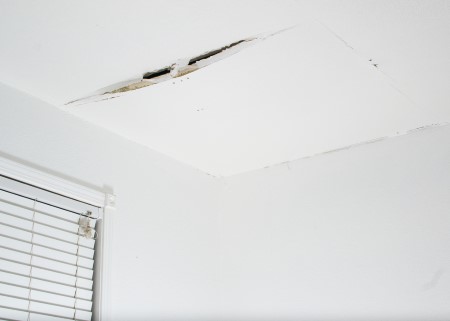Do's & Don'ts of Water Damages.
Do's & Don'ts of Water Damages.
Blog Article
Just how do you really feel about 5 Home Safety Tips To Reduce The Risk Of Fire And Water Damage?

Water provides life, yet water intrusion on some parts where it's not supposed to be can result in damage and also hassle. It can peel off away the surface and deteriorate the material's structure if the water leaks into your structure. Mold and mildew as well as mold additionally prosper in a wet setting, which can be hazardous for your and also your household's wellness. Furthermore, homes with water damages scent mildewy as well as old.
Water can come from many resources like hurricanes, floods, burst pipelines, leakages, as well as drain problems. It's better to have a functioning understanding of safety precautions if you have water damages. Right here are a couple of standards on how to take care of water damages.
Do Prioritize Home Insurance Protection
Seasonal water damage can originate from floodings, seasonal rainfalls, and also wind. There is additionally an occurrence of an abrupt flood, whether it came from a damaged pipe that unexpectedly ruptures into your home. To secure your house, get house insurance coverage that covers both disasters such as all-natural tragedies, as well as emergencies like busted plumbing.
Do Not Fail To Remember to Turn Off Utilities
When catastrophe strikes and you're in a flood-prone area, shut off the primary electrical circuit. Shutting off the power prevents
electrical shocks when water is available in as water functions as a conductor. Do not neglect to turn off the main water line valve as a means to stop more damage.
If the floodwaters are getting high, maintain your furniture stable as they can move and create additional damage.
Do Stay Proactive and also Heed Climate Signals
If you live in a location plagued by floods, stay proactive and prepared at all times. Listen to the news and evacuation cautions if you live near a body of water like a creek, lake, or river .
Don't Neglect the Roof
Your roofing professional needs to take treatment of the faulty rain gutters or any kind of other signs of damage or weakening. An inspection will protect against water from moving down your wall surfaces and saturating your ceiling.
Do Pay Attention to Small Leakages
A ruptured pipeline does not occur in a vacuum or over night. There are warnings that can draw your focus and also show to you some weakened pipelines in your house. Indications of warnings in your pipelines include bubbling paint, peeling off wallpaper, water touches, water stains, or trickling noises behind the walls. There are indicators that the pipe will rupture. If you see these indications, do not wait on a rise. Repair work and also evaluate your plumbing repaired prior to it results in substantial damage to your residence, finances, and an individual nightmare.
Don't Panic in Case of a Ruptured Pipeline
Timing is key when it comes to water damage. If a pipeline bursts in your home, quickly shut off your major water shutoff to reduce off the resource and protect against more damage. Call a trusted water damage reconstruction specialist for help.
Water offers life, but water intrusion on some components where it's not expected to be can result in damage as well as inconvenience. In addition, houses with water damages smell old and also mildewy.
Seasonal water damage can come from floods, seasonal rains, and wind. Indications of red flags in your pipes include bubbling paint, peeling off wallpaper, water touches, water discolorations, or trickling noises behind the walls. If a pipe ruptureds in your home, quickly shut off your main water valve to cut off the resource as well as avoid even more damage.
Some Do's & Don't When Dealing with a Water Damage
DO:
Make sure the water source has been eliminated. Contact a plumber if needed. Turn off circuit breakers supplying electricity to wet areas and unplug any electronics that are on wet carpet or surfaces Remove small furniture items Remove as much excess water as possible by mopping or blotting; Use WHITE towels to blot wet carpeting Wipe water from wooden furniture after removing anything on it Remove and prop up wet upholstery cushions for even drying (check for any bleeding) Pin up curtains or furniture skirts if needed Place aluminum foil, saucers or wood blocks between furniture legs and wet carpet Turn on air conditioning for maximum drying in winter and open windows in the summer Open any drawers and cabinets affected for complete drying but do not force them open Remove any valuable art objects or paintings to a safe, dry place Open any suitcases or luggage that may have been affected to dry, preferably in sunlight Hang any fur or leather goods to dry at room temperature Punch small holes in sagging ceilings to relieve trapped water (don't forget to place pans beneath!); however, if the ceiling is sagging extremely low, stay out of the room and we'll take care of it DO NOT:
Leave wet fabrics in place; dry them as soon as possible Leave books, magazines or any other colored items on wet carpets or floor Use your household vacuum to remove water Use TV's or other electronics/appliances while standing on wet carpets or floors; especially not on wet concrete floors Turn on ceiling fixtures if the ceiling is wet Turn your heat up, unless instructed otherwise

I'm very inquisitive about 5 Home Safety Tips To Reduce The Risk Of Fire And Water Damage and I really hope you appreciated my blog entry. Sharing is nice. One never knows, you might be helping someone out. Many thanks for your time. Don't forget to visit our blog back soon.
Report this page